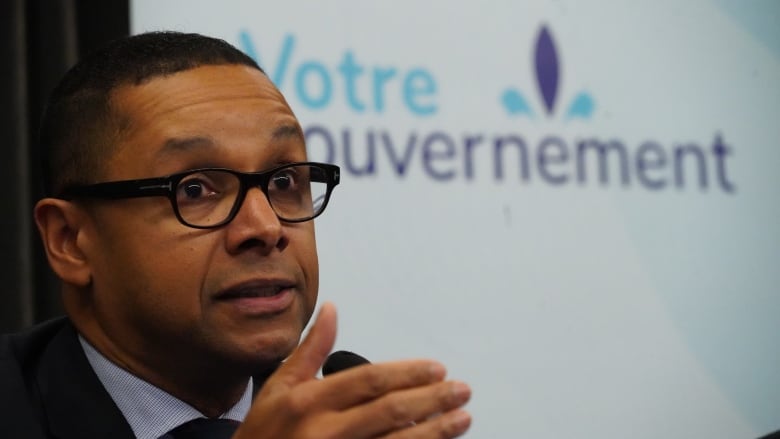Quebec cuts level of lead allowed in drinking water
Province to become 1st to adopt new Health Canada standard, cutting acceptable lead concentration by half

The Quebec government has announced it will fall in line with new federal guidelines on lead levels in drinking water.
In March, Health Canada cut the acceptable concentration of lead from 10 micrograms per litre to five micrograms per litre. Quebec will follow suit, said Lionel Carmant, the province's junior health minister.
"The government wants to attain the level set out by Health Canada, and what's more, work toward the safest level possible — no lead," Carmant said.
Environment Minister Benoit Charette said Quebec will be the first province to adopt the new federal standard.
Carmant, Charette, Municipal Affairs Minister Andrée Laforest and Horacio Arruda, Quebec's director of public health, all spoke at a news conference in Quebec City Wednesday.
All stressed that the quality of the province's drinking water supply is good. During a scrum with reporters, Premier François Legault went a step further, saying Quebec's water is of "excellent" quality and presents no danger to the population.
The issue is with the pipes — lead is usually found in drinking water after leaching from old lead pipes that carry the water into a building or remain in the building's plumbing system.
Exposure to the metal can affect the neurological development and behaviour of children. In adults, it can result in increased blood pressure or kidney problems.
The government wants municipalities across Quebec to come up with plans to reduce the levels of lead in the water supply. Those plans must include:
- Determining the neighbourhoods with homes that are most likely to have a lead service pipe and a timetable for identifying those sectors.
- Figuring out how long it will take to replace the lead service pipes in affected homes.
- Evaluating how much the process will cost.
- Coming up with a way to prioritize the work.
Municipalities plead for financial help

The government's ultimate goal is for all lead service pipes to be replaced. Carmant said homes where tests reveal the lead level is above five micrograms per litre will be the priority.
However, there was no mention of new money to help municipalities cover the cost of creating and carrying out those plans nor whether homeowners will have to pay to replace the service pipes.
"We'll have to wait and see the [test] results," Laforest said.
"It's possible that in Quebec, municipalities won't have to deal with that problem on a large scale."
In a statement, the Union des municipalités du Québec (UMQ) said that its members are taking the issue of lead contamination seriously.
The water coming out of treatment plants is safe, the UMQ reiterated, but ensuring the safety of pipes is more complicated, as that responsibility is shared between homeowners and different government bodies.
"It is essential that Quebec establish, with municipal partners, a timeline and financial framework that accounts for the different municipal realities in terms of human, material and financial resources," said UMQ president and Drummondville Mayor Alexandre Cusson.
Montreal to do work, charge it to homeowners
The City of Montreal unveiled plans Wednesday to do the work to change the service pipes itself. The city will then bill homeowners for the work, giving them 15 years to pay off the debt.
Montreal has been trying to persuade citizens to change their pipes for years, with underwhelming results.
Québec Solidare MNA Sol Zanetti commended Montreal's plan. He said the provincial government should help municipalities that can't afford to do the same, so all citizens can have access to water of high quality.
"It is unfair that [those] who don't have enough money to change their plumbing have to drink lead," he said.
PQ health critic Sylvan Gaudreault echoed that sentiment, calling on the government to support municipal efforts to change old lead pipes.
Changes to sampling method
The way water samples are collected for testing will also be changed, Carmant said.
Up until now, people were advised to run water for five minutes before a sample was taken. Now, water samples will be collected as soon as the tap is turned on after a stagnation period of 30 minutes.
That change comes after an investigation by Concordia University's Institute for Investigative Journalism, Global News and Le Devoir found the previous sampling method does not lead to an accurate measurement of the lead levels.
The Education Ministry will use the same revised standards and testing methods to evaluate drinking water in schools, Carmant said.
Earlier this month, Education Minister Jean-François Roberge ordered every public and private school in the province to test its drinking water for lead.
This summer, INSPQ, Quebec's public health research institute, made public a study that found 16 per cent of schools in Montreal have at least one faucet or water fountain contaminated by lead, findings that were corroborated.
with files from Cathy Senay